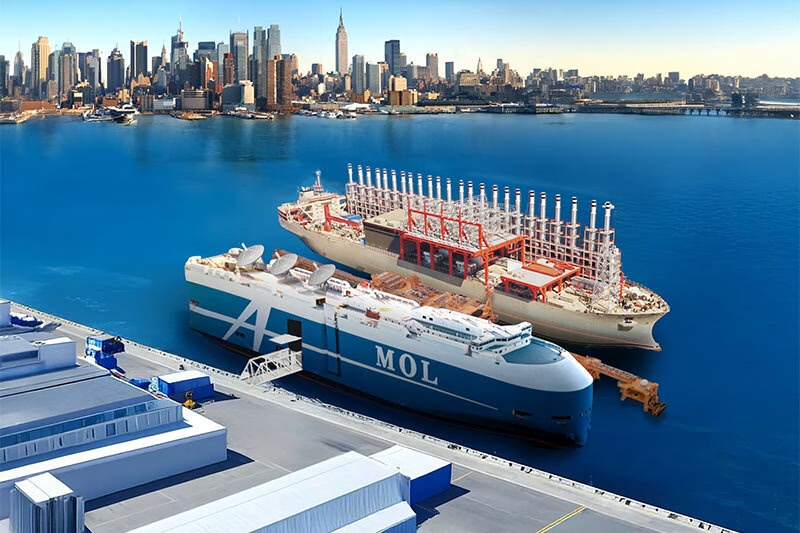In a visionary step toward next-generation digital infrastructure, Mitsui O.S.K. Lines, Ltd. (MOL), a global shipping giant, has signed a Memorandum of Understanding (MOU) with Kinetics, the energy transition arm of floating power leader Karpowership. The press release by MOL indicates that together, they will develop the world’s first Integrated Floating Data Center Platform, slated to begin operations in 2027.
This novel initiative will convert used ships into fully functioning, offshore data centers powered by sustainable, flexible energy sources. The effort combines MOL’s maritime expertise with Kinetics’ leadership in mobile energy systems to address the growing global demand for scalable, eco-conscious data centers.
Smart Power, Smarter Infrastructure
Unlike traditional land-based facilities, the floating data center will benefit from uninterrupted, dedicated power sourced from Powerships—floating power plants capable of using fuels like LNG. It also allows integration with land grids, solar, or wind farms depending on location. This hybrid model enhances resilience and efficiency.
With over 10,000 MW of operational capacity across 19 countries, Karpowership brings deep experience in integrated floating energy. When paired with MOL’s ship conversion capabilities and offshore logistics, the platform offers a mobile, scalable, and rapidly deployable solution that eliminates land constraints and grid delays.
“This project allows us to bring digital infrastructure to areas experiencing power shortages, without waiting years for grid upgrades,” said Mehmet Katmer, CEO of Kinetics.
Sustainable by Design
The project’s environmental impact is minimized by repurposing existing vessels, eliminating the need for new construction materials and significantly reducing CO₂ emissions. The direct seawater cooling system offers energy-efficient server management while cutting operational costs.
Tomoaki Ichida, Managing Executive Officer of MOL, emphasized, “We are leveraging our assets to provide flexible, fast, and low-impact infrastructure. This is just the beginning of our broader commitment to building social infrastructure centered on the ocean.”
Pilot Project Summary
| Item | Details |
|---|---|
| Capacity | 20–73 MW (modular and expandable) |
| Cooling | Direct water cooling from seawater or river water |
| Ship Specs | 9,731 GT, 120m LOA, 21.2m beam, 8.98m draft |
| Power | Powership (multi-fuel), optional land grid connection |
| Network | Internet Exchange (IX) onshore, submarine cable support |
Timeline:
- 2025: Finalize conversion design, MOU with data operator and port authorities
- 2026: Start vessel conversion, secure permits, sign commercial contracts
- 2027: Launch offshore operations
Why Floating Data Centers?
- Power Independence: Operates without relying on strained local grids
- Land-Free Deployment: No land acquisition needed in urban zones
- Rapid Deployment: One-year conversion, versus three years for land-based builds
- Mobility: Can be relocated based on demand or even operate while in motion
- Cost & Environmental Efficiency: Reuses ship systems and hulls, enabling lower capital and operational costs
A Floating Future
This initiative represents a bold leap into the future of digital infrastructure. With rising demand and limited resources, floating data centers offer a clean, scalable, and flexible solution to bridge the digital divide in regions where traditional models fall short. By turning ships into floating tech hubs, MOL and Kinetics are not only innovating but also leading the green evolution of global data capacity.

